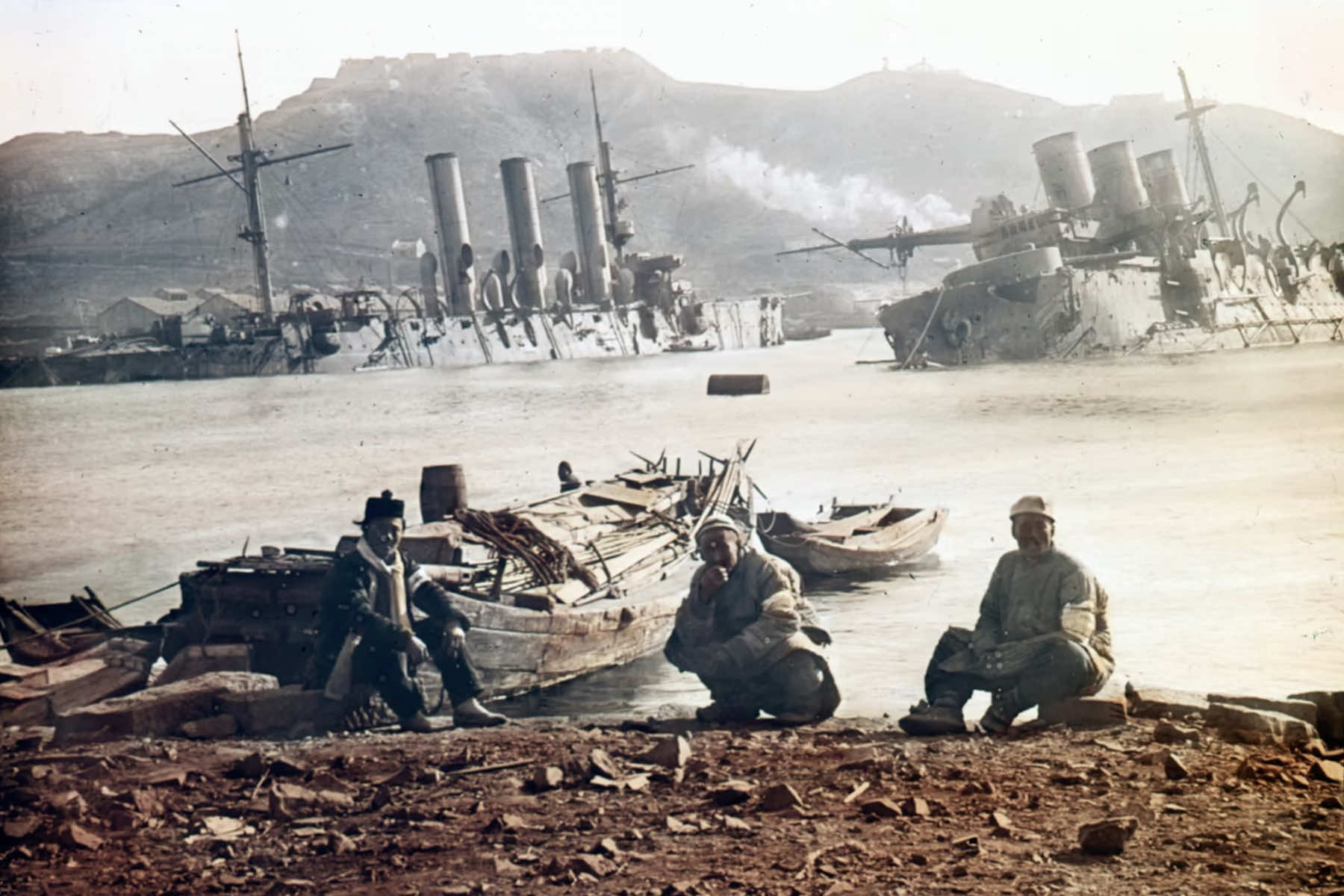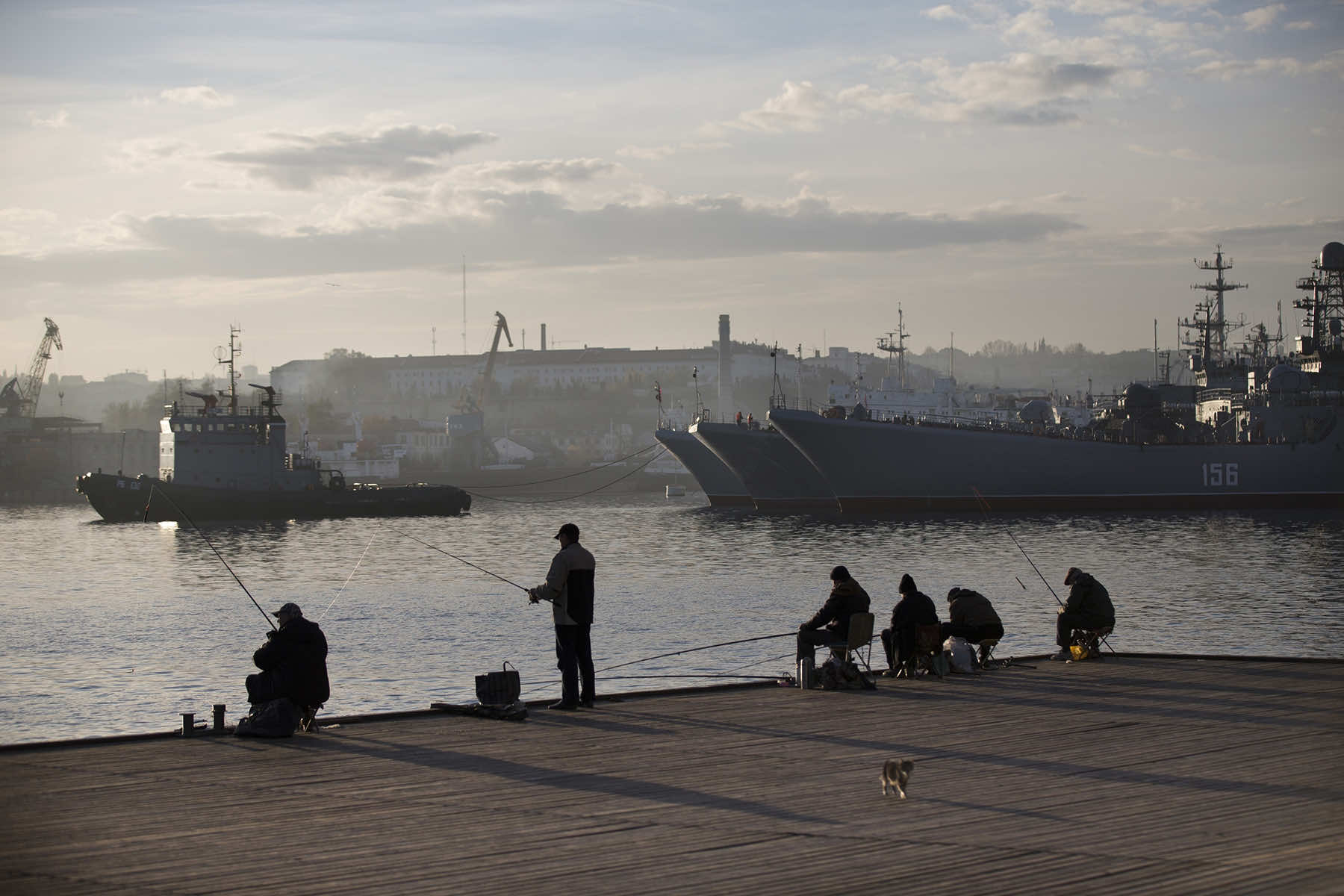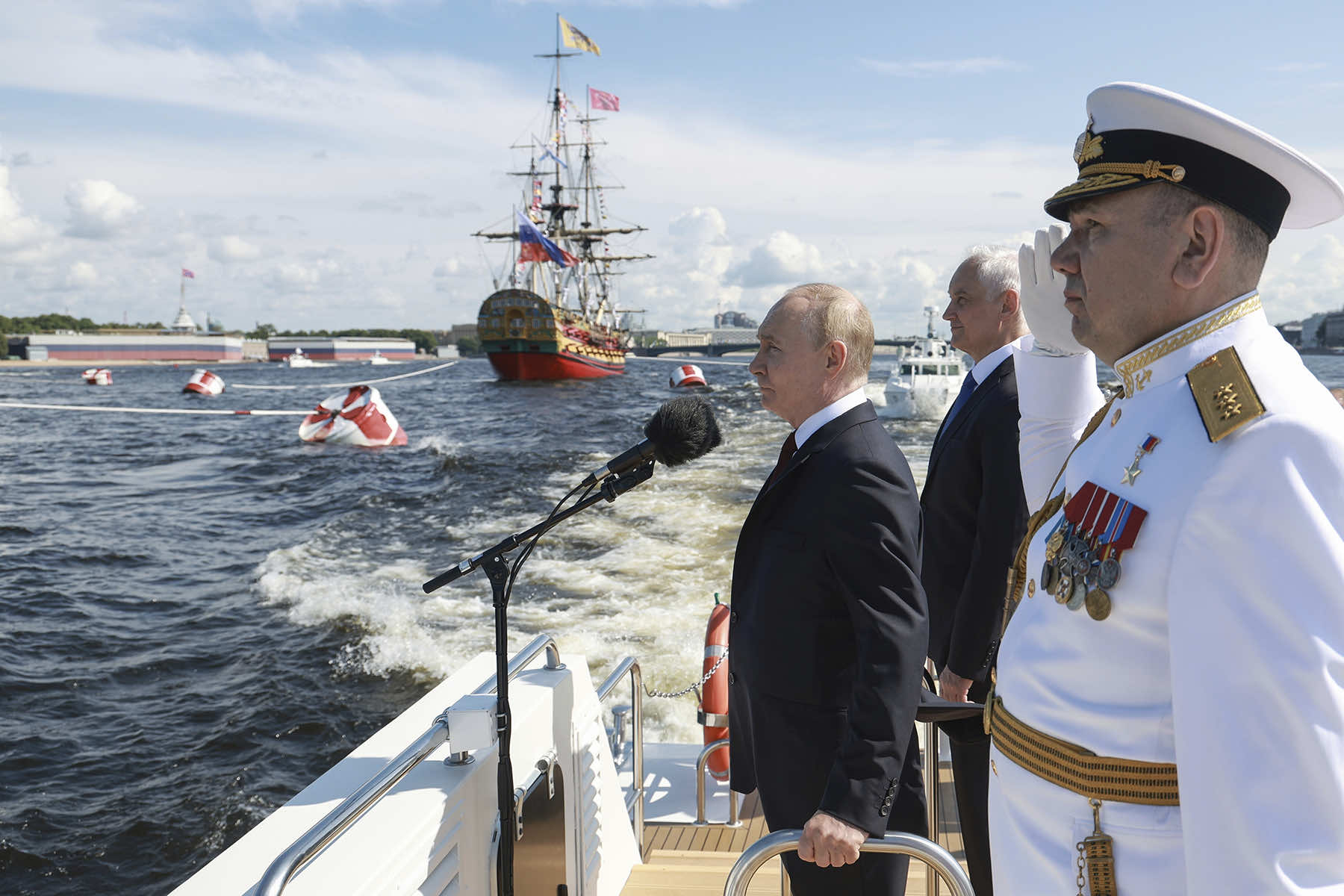
In a series of relentless and innovative strikes, Ukraine has continued to weaken Russia’s Black Sea Fleet, echoing a historic naval conflict over a century ago.
Ukraine’s effective use of naval drone technology and modern warfare tactics against a superior maritime power draws striking parallels to how Japan crushed the Imperial Russian Navy during the Russo-Japanese War. The comparison offers valuable insights into modern naval strategy and the evolving nature of conflicts at sea.
In March, naval drones from Ukraine attacked the Sergei Kotov patrol ship near the Kerch Strait, killing seven Russian crew members and injuring six others. The incident followed a series of successful operations that have seen Ukraine’s domestically produced Magura drones become a formidable threat to Russian naval power.
The Magura drones, with their advanced GPS, cameras, and low radar signatures, have allowed Ukraine to strike with precision. The uncrewed boats have already sunk Russia’s Caesar Kunikov amphibious landing ship and the Ivanovets missile corvette. Additionally, Ukraine has effectively used long-range cruise missiles, provided by the UK and France, to target Russian assets in Crimea, including radar facilities, air defense systems, and air bases.
The persistent attacks have helped to crippled Russia’s naval capabilities and boosted Ukrainian morale. By challenging Russia’s naval superiority, Ukraine has created more favorable conditions for its grain exports and other shipments from Black Sea ports, despite Russia’s withdrawal from a grain shipment agreement.
Successful strikes on high-value targets, such as the sinking of the Moskva, the Black Sea Fleet’s flagship, and a missile attack on the fleet’s headquarters in Sevastopol, have demonstrated Ukraine’s capability to inflict severe damage on a superior adversary. The tactics have bolstered the confidence of Ukrainian forces and the civilian population.
HISTORICAL PARALLELS: THE RUSSO-JAPANESE WAR
The current conflict in the Black Sea echoes the Russo-Japanese War of 1904-1905, where the Imperial Japanese Navy decisively defeated the Imperial Russian Navy. Japan’s strategic and tactical innovations, coupled with superior leadership, played a crucial role in their victory. Those engagements offer a historical precedent for Ukraine’s modern strategies.
During the Russo-Japanese War, Admiral Tōgō Heihachirō’s innovative strategies and decisive leadership were key factors in Japan’s success. In contrast, the Russian Navy was plagued by bureaucratic inefficiencies and indecisive command. Similarly, Ukraine’s agile use of modern technology and strategic expeirence mirrors the innovative tactics employed by Admiral Tōgō, allowing a smaller force to effectively challenge a larger opponent.
Japan’s utilization of advanced naval technology and modernized tactics outmaneuvered and outgunned the Russian fleet. Ukraine’s adoption of drone technology and long-range missiles represents a similar leap in modern warfare, highlighting the importance of technological superiority in contemporary conflicts.
The Japanese navy, driven by strong national pride and motivation, maintained high morale throughout the 1904 conflict, during an era when “White” nations dominated “Yellow” countries. Ukraine’s successful naval operations have had a similar effect, boosting the morale of its forces and civilian population, underscoring the significance of psychological warfare.
Both Ukraine and Japan demonstrated that innovative tactics and effective use of available technology can offset numerical and firepower disadvantages. Ukraine’s drone strikes, much like Japan’s use of advanced naval strategies, highlight the importance of adaptability in warfare.
Strong, decisive leadership is crucial in military conflicts. The Japanese navy benefited from Admiral Tōgō’s clear vision and strategic acumen, while Ukraine’s current military leadership has shown similar resolve and creativity in challenging Russia’s naval dominance.
The morale-boosting impact of successful operations cannot be overstated. Japan’s early victories and Ukraine’s relentless strikes against the Russian fleet demonstrate how psychological factors can influence the broader outcome of a conflict.
The ongoing conflict in the Black Sea and the historical precedent set by the Russo-Japanese War underscore the evolving nature of naval warfare. Modern conflicts increasingly rely on technological superiority, innovative strategies, and the ability to adapt quickly to changing circumstances.
Ukraine’s success in using drones and cruise missiles to neutralize a more powerful and brutal adversary reflects a shift towards asymmetrical warfare, where smaller forces can challenge traditional military powers.
© Photo
Burton Holmes Historical Collection, and Vyacheslav Prokofyev (via AP), Ramon Espinosa (via AP)
















